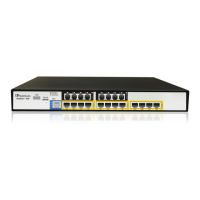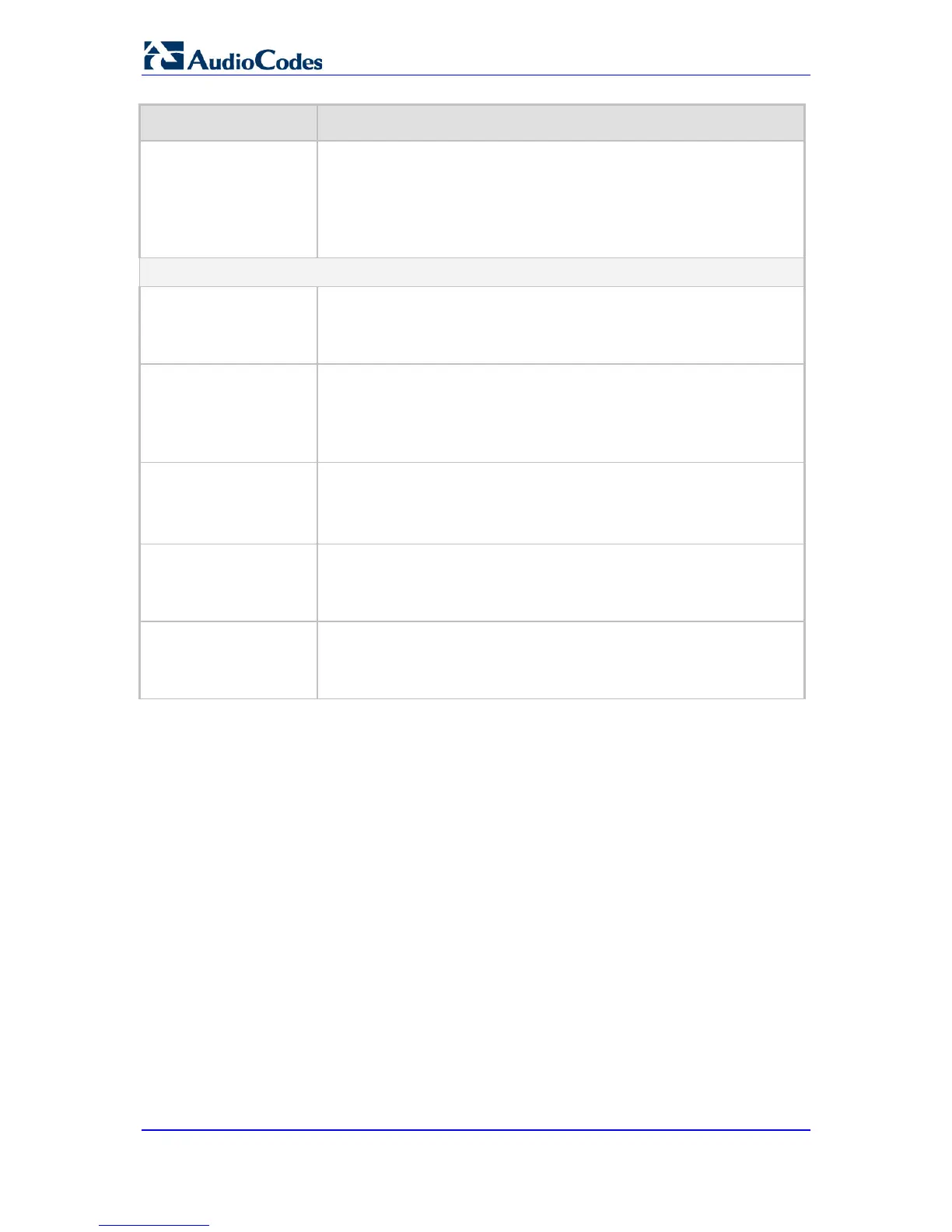Parameter Description
Manipulated URI
CLI: manipulated-uri
[IPInboundManipulatio
n_ManipulatedURI]
Determines whether the source or destination SIP URI user part is
manipulated.
[0] Source = (Default) Manipulation is done on the source SIP URI
user part.
[1] Destination = Manipulation is done on the destination SIP URI
user part.
Operation Rule (Action)
Remove From Left
CLI: remove-from-left
[IPInboundManipulatio
n_RemoveFromLeft]
Defines the number of digits to remove from the left of the user name
prefix. For example, if you enter 3 and the user name is "john", the new
user name is "n".
Remove From Right
CLI: remove-from-right
[IPInboundManipulatio
n_RemoveFromRight]
Defines the number of digits to remove from the right of the user name
prefix. For example, if you enter 3 and the user name is "john", the new
user name is "j".
Note: If both 'Remove From Right' and 'Leave From Right' parameters
are configured, the 'Remove From Right' setting is applied first.
Leave From Right
CLI: leave-from-right
[IPInboundManipulatio
n_LeaveFromRight]
Defines the number of characters that you want retained from the right of
the user name.
Note: If both 'Remove From Right' and 'Leave From Right' parameters
are configured, the 'Remove From Right' setting is applied first.
Prefix to Add
CLI: prefix-to-add
[IPInboundManipulatio
n_Prefix2Add]
Defines the number or string that you want added to the front of the user
name. For example, if you enter 'user' and the user name is "john", the
new user name is "userjohn".
Suffix to Add
CLI: suffix-to-add
[IPInboundManipulatio
n_Suffix2Add]
Defines the number or string that you want added to the end of the user
name. For example, if you enter '01' and the user name is "john", the
new user name is "john01".
31.5.2 Configuring IP-to-IP Outbound Manipulations
The IP to IP Outbound Manipulation page allows you to configure up to 100 manipulation
rules for manipulating SIP URI user part (source and destination) of outbound SIP dialog
requests. Manipulation rules in the table are located according to the source IP Group, and
source and destination host and user prefixes and can be applied to a user-defined SIP
request type (e.g., INVITE, OPTIONS, SUBSCRIBE, and /or REGISTER). However, since
outbound manipulations are done only after routing, the outbound manipulation rule
matching can also be done by destination IP Group.

